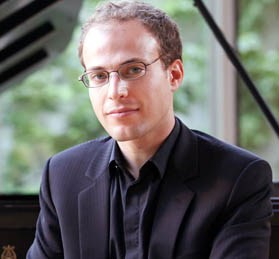New World Symphony wraps 25th season in a blaze of Beethoven

Marek Janowksi conducted the New World Symphony in its final season program of Strauss and Beethoven Saturday night at the Arsht Center.
The New World Symphony’s 25th season ended Saturday in Miami with the joyous C major finale of Beethoven’s Fifth Symphony.
The orchestra sounds better than ever these days, with virtually impeccable technical execution in all sections, great musical sensitivity and a youthful vigor and sense of discovery to its playing. With the end of the season, about a third of its members will depart for jobs in the outside world, clearing space for a new class of young conservatory graduates to join the orchestra.
The concert at the Arsht Center’s Knight Concert Hall was conducted by Marek Janowski, artistic director of the Rundfunk-Sinfonieorchester Berlin and a frequent guest conductor with U.S. orchestras.
The performance opened with Richard Strauss’s Don Juan, the brilliant tone poem that placed its 24-year-old composer on the musical map. Among the most technically demanding works in the repertoire, Don Juan is a perennial on the audition lists for jobs at symphony orchestras. Since New World members engage in auditions throughout the year, you’d expect them to have this difficult music well under their fingers, and they did. The rapid string runs with which the work abounds can become a blur in many performances, but here they glinted with incisive articulation, even in the lower strings, where such passages often can sound muddy.
Although this work is often milked for its lush romanticism, Janowski chose a more restrained interpretation. He often seemed to be holding back the strings in favor of woodwinds and brass, an approach that gave the dreamily melodic middle section an unaccustomed shimmering glow.

Orion Weiss
Soloist Orion Weiss took the stage to perform Strauss’s youthful Burleske for piano and orchestra, a bravura concert work that sounds a lot like Liszt, but with turns of phrase and harmonies that leave little doubt about its composer.
Weiss’s formidable technique allowed him to meet the work’s technical hurdles with apparent ease. But rather than emphasizing the heroic, virtuoso side of the work, he played with the sort of light, even touch you’d expect in a Mozart concerto, as his hands flew up and down the keyboard in elaborate accompaniments to the tunes in the orchestra. But the American pianist could play in the 19th century grand manner when he wanted to, as in the booming, showy chords and arpeggios that come toward the end.
The Burleske gives a prominent role to the timpani, which engages in dialogues with the piano, giving the work a unique texture. New World timpanist Alex Wadner gave a finely calibrated performance, thunderous, ominous and dramatic.
Any longtime concertgoer has heard many interpretations of the first movement of Beethoven’s Fifth Symphony, which contains the most famous motif in all of classical music. Janowski chose a brisk, light approach that gave the movement a sense of accelerating momentum, if at the cost of the grim power that comes with more monumental interpretations. He kept the tempo moving, not slowing as many do for a more dramatic, hammered recapitulation of the opening notes. His scrupulous attention to the score brought out the inner voices of the winds, which are often buried under the weight of strings and brass.
This was a performance weighted toward the last movement, where Janowski finally unleashed the orchestra’s full power and volume in Beethoven’s jubilant, affirmative answer to the darkness of the first movement. Although excessive volume from the lower strings competed too much with the melodies in the violins toward the end, this was a dynamic, forceful performance that made a worthy ending to the season.
Posted in Performances
Leave a Comment
Sun May 5, 2013
at 10:57 am
No Comments






